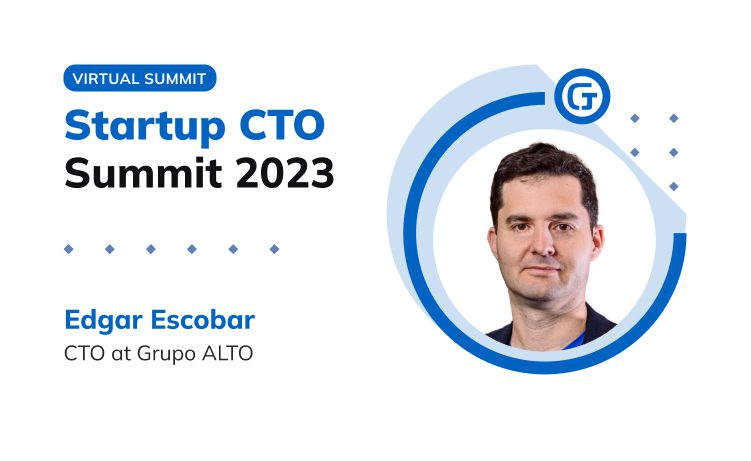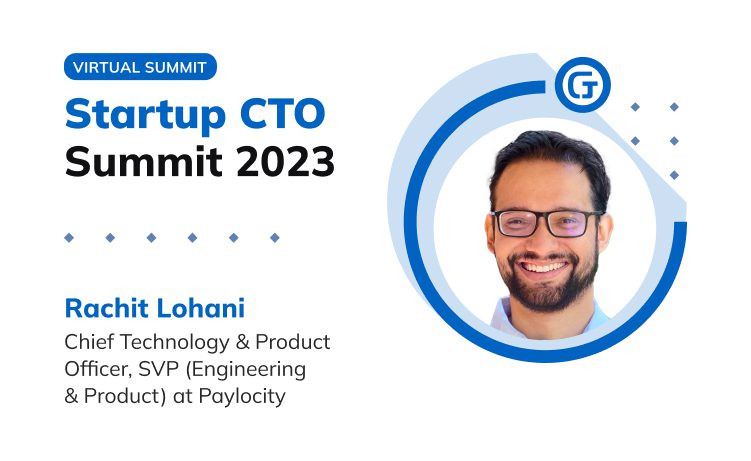
Startup CTO Summit: Navigating Troubled Waters



In 2022 many tech organizations faced some dramatic changes in the industry landscape. The software development field always had a talent shortage issue but saw major layoffs last year. Around 200,000 people lost their jobs in the US during this period. Investors are now more cautious when choosing targets for funding. All of that creates turbulence that technical leaders should handle. Shawn Holmes, CTO at Wrapmate, discusses the tactics tech orgs should use.
When talking about 10X leadership, CTOs and startup founders should realize that priorities and constraints changed. “It’s really just been this perfect storm of things that have all come to fruition over the last several years,” Shawn Holmes points out. According to him, just a short time ago, hiring in tech was like a competition and resulted in an excess number of developers who were then laid off.

The status quo reminds Shawn the reminiscent of the dot-com bust when everything that was considered to be successful crashed as many people were rather focused on hype rather than real business development. And established companies need real tactics to be more efficient as they have made some critical mistakes during this “perfect storm”.
Content
One critical aspect that has come to the forefront is the trust between employers and employees. Organizations that encourage their workforce to invest heavily in personal growth and self-identification with the company’s values only to lay off employees without meaningful communication subsequently have experienced an erosion of trust. This kind of breach has led to widespread cynicism and skepticism among employees, particularly developers, making future hiring endeavors more challenging.
Amidst the uncertainties, organizations find themselves confronted with competing return-to-office mandates. On one side, there are aggressive pushes to bring employees back into the office, emphasizing the benefits of in-person collaboration. On the other hand, the cynicism and the success of remote work during the pandemic have resulted in resistance to returning to the office.
The COVID-19 pandemic acted as a watershed moment for remote work. Virtually overnight, individuals across various industries were forced to work remotely, demonstrating its feasibility. Consequently, the insistence of some businesses on mandating a return to the office has raised questions and concerns among employees. The realization that remote work can be efficient and productive has shifted the perspective and expectations of the workforce.
Managing a remote workforce presents unique challenges that require a distinct skill set. Successful remote management entails establishing clear communication channels, fostering a sense of belonging and inclusivity, and providing adequate support and resources for remote employees. Just as it takes different skill sets to interview for a tech job and perform the job itself, organizations must adapt their management approach to accommodate remote work effectively.
As we navigate the evolving landscape of work, it is crucial for organizations to embrace the new normal. This entails acknowledging the accomplishments and lessons learned from the remote work experience during the pandemic. Organizations should prioritize building trust, ensuring transparent communication, and adapting their management practices to support a remote workforce effectively. By doing so, they can foster a positive work environment that enables employees to thrive, regardless of their physical location.
“You know, the crash of crypto is something that continues to plague the industry. And now this incoming wave of the death of the metaverse is really souring the investment landscape.” Shawn Holmes says. The rules of the game have transformed significantly. Gone are the days when companies could prioritize growth at any cost and throw money at their problems. The availability of funds has dwindled, and investors have adopted a more cautious approach, carefully selecting where to allocate their investment dollars to ensure a reasonable return. This shift in investor mindset has coincided with the rise of artificial intelligence (AI), which has sparked both bursts of innovation and moments of panic.
However, much of the panic surrounding AI that is portrayed in the media may be exaggerated. While there are legitimate concerns associated with AI, the focus of attention should be on addressing the real issues rather than sensationalized narratives. It’s important to recognize that the true challenges lie not in a doomsday scenario akin to Skynet but rather in need to refine and rectify the code generated by AI systems.
These developments, combined with various other factors, have significantly altered the landscape for engineering leaders. As we grapple with these changes, we find ourselves confronted with the daunting task of navigating through uncharted territory. The dynamic interplay between limited funding, investor conservatism, and the transformative power of AI demands a thoughtful and strategic approach. And to create it Shawn Holmes recommends going back to essentials.

With his experience in software development and transitioning into management and leadership, Shawn Holmes offers valuable learnings and strategies to help leaders navigate the above-mentioned challenges.
One of the fundamental tactics Holmes emphasizes is investing in and measuring DevOps Research and Assessment (DORA) metrics. These metrics, including lead time, deployment frequency, and change failure rate, are crucial for building a high-performance engineering organization. By focusing on these metrics, leaders can align their teams with a culture of continuous improvement, ensuring software quality remains a top priority.
Holmes highlights the importance of the zero-to-one mentality when solving problems. Rather than striving for a polished solution from the start, leaders should focus on delivering a minimum viable product (MVP) that addresses the core problem. This approach allows for quick value delivery and iterative improvements based on user feedback. Additionally, applying the 80-20 principle to prioritize key functionality that caters to the majority of customers can maximize the impact of limited resources.
To optimize costs, leaders should take a hard line on Software as a Service (SaaS) vendor contracts. Holmes advises being proactive in negotiations, as many vendors are open to discussing pricing and finding mutually beneficial agreements. By challenging pricing and exploring alternative options, leaders can reduce expenses without compromising essential tools and services.
Despite grand entrepreneurial visions, Holmes emphasizes the importance of sticking to the fundamentals of software development. Focusing on DORA metrics, maintaining software quality through proper testing and bug tracking, and following established processes are essential for success. By prioritizing these fundamentals, leaders can build a solid foundation for their engineering organization and ensure continuous improvement.
Holmes stresses the significance of building a culture where day-to-day operations contribute to software quality. By fostering an open culture where anyone can raise concerns or report bugs, leaders create a feedback loop that helps identify and resolve issues efficiently. This approach encourages collaboration, empowers employees, and reinforces the commitment to delivering high-quality software.
Embracing 10X leadership tactics becomes crucial for engineering organizations to thrive. By investing in DORA metrics, adopting the zero-to-one and 80-20 mentality, negotiating SaaS contracts, sticking to fundamentals, and cultivating a culture of quality, leaders can navigate the challenges and drive success in the new landscape. Get more insights from our Startup CTO Summit to stand out from the competition and deliver value to your customers.








